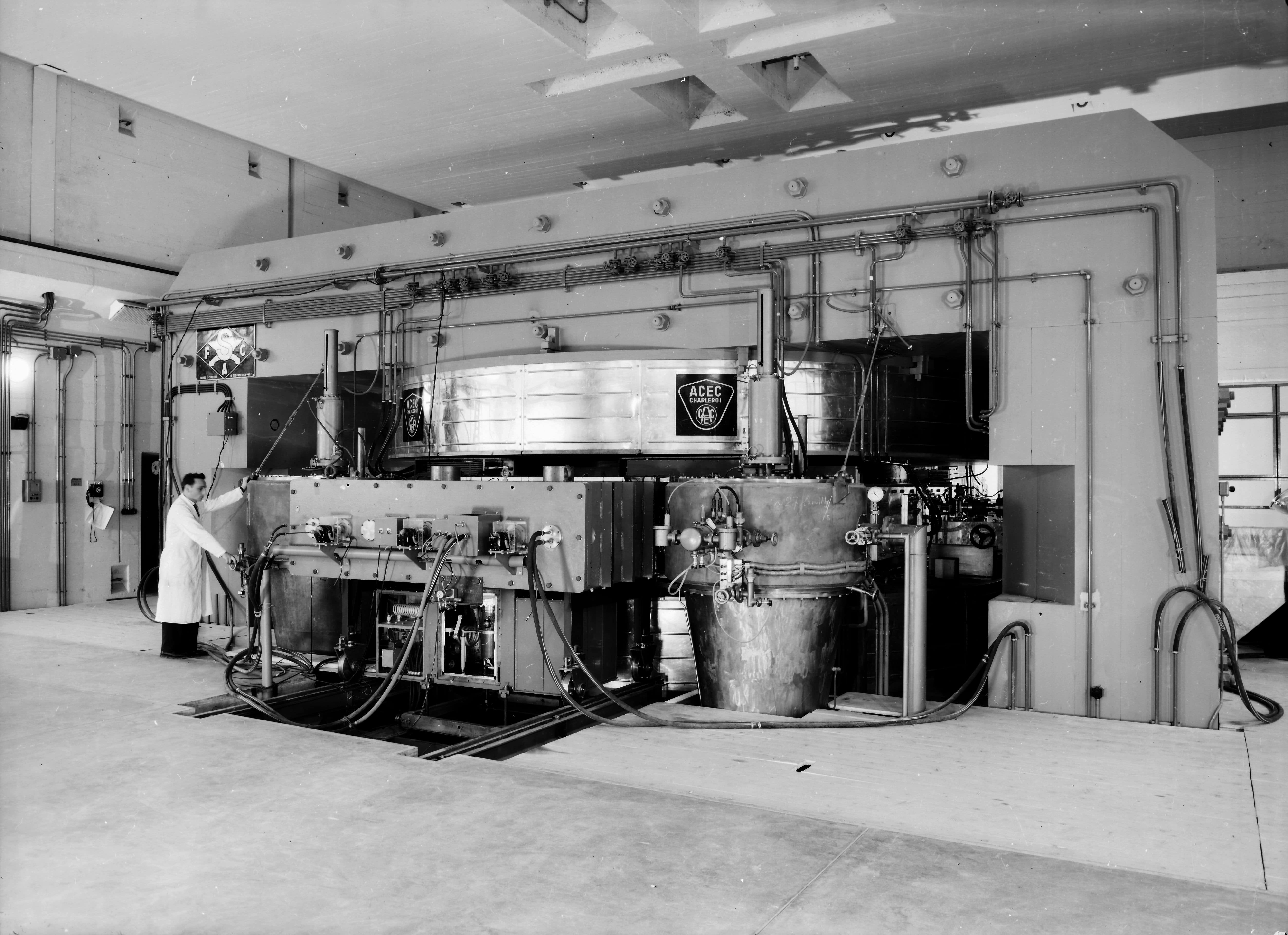CERN70: A first discovery
14 February 2024 · Voir en français
Part 3 of the CERN70 feature series. Find out more: cern70.cern
Giuseppe Fidecaro was among the small group of physicists who performed the first experiment at CERN to provide results in 1958 that would spread the Laboratory’s name around the world

A few months after CERN’s first accelerator, the Synchrocyclotron (SC), was commissioned, a first experiment was launched. At the time, weak interactions were among the most hotly debated topics in high-energy physics. Scientists were puzzled, for example, about the decay of the particle known as the pion. The particle was known to decay into two other particles: a muon and a neutrino. According to theory, it should also sometimes decay into an electron and a neutrino, but this type of decay had never been observed before.
In August 1958, at CERN’s Synchrocyclotron, Tito Fazzini, Giuseppe Fidecaro, Alec Merrison, Helmut Paul and Alvin Tollestrup observed this decay for the first time, at a rate in line with predictions of the theory of the weak interaction.
It was CERN’s first major discovery.
Recollections
We decided to present what we already had – 40 events, from a total of 124 photographs, at a rate compatible with theory […] Next day the news had gone around the world.
Giuseppe Fidecaro
Giuseppe Fidecaro arrived in Geneva in 1956, after spending two years at Liverpool University's synchrocyclotron. He was one of the small group of physicists who performed the first experiment at CERN to provide results that would spread the Laboratory’s name around the world.

“The basic idea of the experiment was that the beam of pions would be stopped in a scintillation counter. Our experimental set-up consisted of a telescope made of a sandwich of graphite plates and scintillation counters. The output signals were displayed on the screen of a high-speed oscilloscope and photographed on continuously moving film. We could recognise the decay of the pion from the recorded signal. With its twelve counters, it was a rather complex and sophisticated apparatus for its time!
In August 1958, we finally got beam to our apparatus. After some checks, we went on changing the thickness of the telescope. A thin telescope simply gave muon and neutrino decay signatures. When we inserted the last graphite plate, we weren't really prepared for what was going to happen. Tito Fazzini, Alec Merrison, Helmut Paul, Alvin Tollestrup and I observed what no one else in the world had seen before: the film essentially showed electron and neutrino decay signatures. We had pion-electron events! A few days later, Julius Ashkin joined our experiment.
On 1 September, the second United Nations International Conference on the Peaceful Uses of Atomic Energy opened its doors in Geneva. Our results couldn’t be hidden from the large number of physicists, journalists etc. who had come from all over the world for the conference. Although the experiment was not yet complete, we decided to present what we already had – 40 events, from a total of 124 photographs, at a rate compatible with theory – at a special session of the conference on Thursday 4 September, only one month after we got the first beam. The next day, the news had gone around the world. For the first time the local newspaper Tribune de Genève announced “Discovery at CERN”. Our first paper was accepted for publication one week later, and the final paper appeared in July 1959.

Our approach had been purely experimental, typical of a university lab. An old problem had suddenly turned hot and we looked at whether it could be solved with existing equipment. An experiment using a range telescope had failed to find the missing decay a few years earlier. We could repeat it – but with a minor modification: pions would stop in a scintillator, not within an inert target. A so-called travelling wave oscilloscope was already in our hands! Marc Fell and Max Renevey only had to build a few light-guides and mechanical supports. All this took place in an atmosphere full of enthusiasm.
CERN hosted the Rochester Conference [now ICHEP (International Conference on High Energy Physics)] in June 1958, less than two months after our work had begun. Our apparatus was set up in the “neutron hall” of the SC, and the conference participants were able to see it. To some of them, the telescope looked quite simplistic, compared to the enormous magnet used for the same purpose in Chicago the previous year, but without success.
There were additional firsts in this experiment. The programme written for CERN's brand-new Mercury computer, designed to determine the efficiency of our apparatus, was the first “Monte Carlo” programme – based on a randomised simulation – written for an experiment at CERN. Together with Yves Goldschmidt-Clermont and Norman Lipman, we were also able to measure the average lifetime of the pion with improved precision. To do this, we used the first instrument developed at CERN to evaluate photos, IEP, which, while we waited for the bubble chamber images, enabled us to evaluate the 10 000 events recorded with our apparatus”.
---
This interview is adapted from the 2004 book “Infinitely CERN”, published to celebrate CERN’s 50th anniversary.
